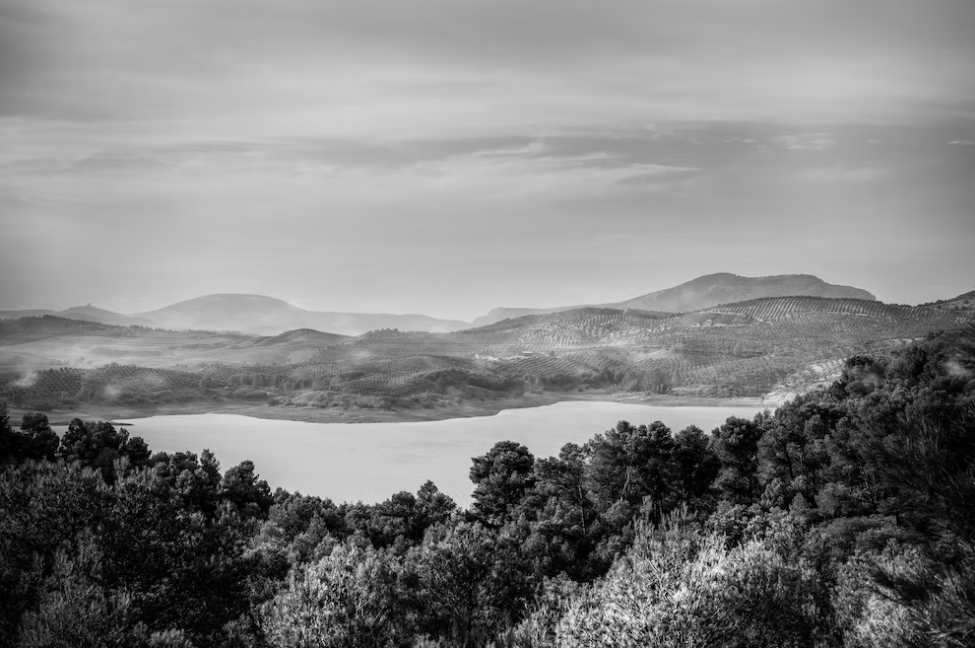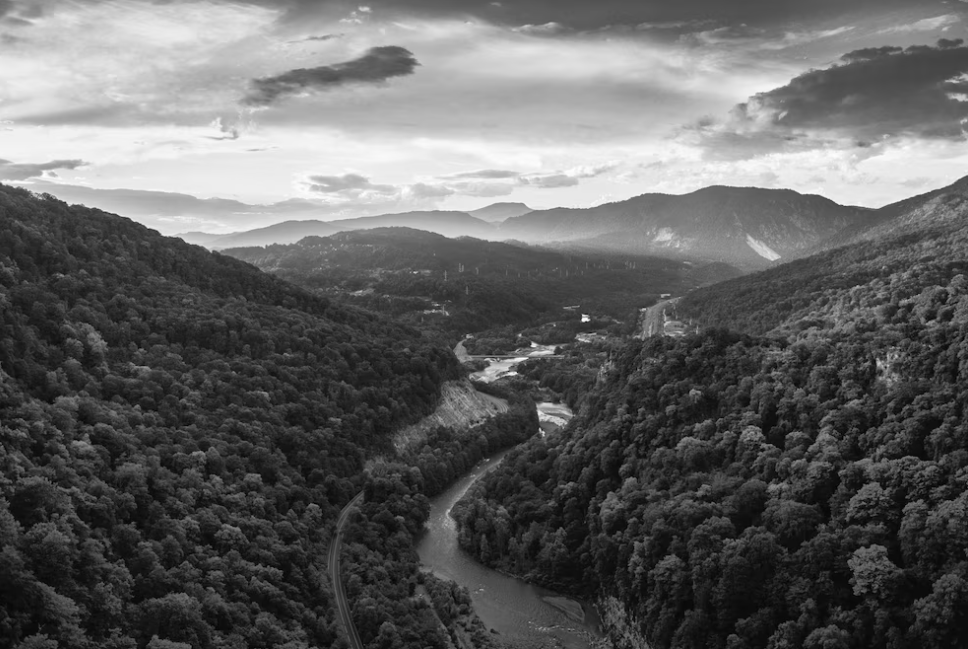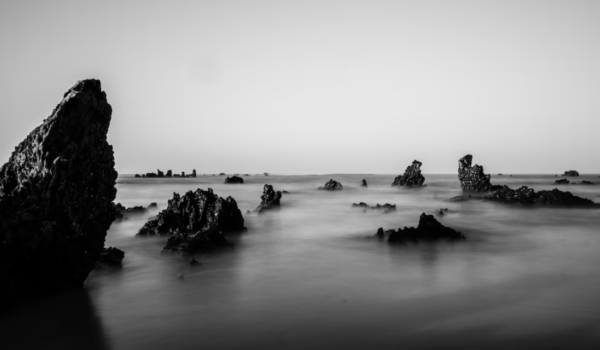Discover the power of the Zone System, a fundamental tool for photographers seeking to grasp exposure and dynamic range. By learning this system, you’ll gain the ability to interpret light and tones in any scene, enabling you to confidently set your exposure settings. Whether you’re capturing images in color or black and white, the Zone System empowers you to envision the final photograph.
While some opinions may deem the Zone System complex or unsuited for digital photography, it holds undeniable merit when photographers possess a basic understanding. Embrace the Zone System as a reliable and frequently used tool to elevate your photography skills.
The Origin of the Zone System
The Zone System was conceived and developed by two prominent figures in photography: Ansel Adams and Fred Archer. Ansel Adams, a renowned American landscape photographer and environmentalist, is credited with perfecting the system. He transformed what was initially a loose concept into a precise and practical tool for photographers to control their images’ tonal range.
Adams began exploring the concept of the Zone System in the early 1930s. He was searching for a way to achieve consistent results in his images, ensuring that the final prints matched his artistic vision. His collaboration with Fred Archer, a photographic lab technician, played a crucial role in refining the system.
Understanding the Zone System
The Zone System, a groundbreaking invention by the visionary American photographers Ansel Adams and Fred Archer, revolutionized the world of photography with its scientific approach to evaluating tone range in compositions. Originally designed to achieve unparalleled precision and accuracy in black and white sheet film exposure and processing, the Zone System predates the era of digital photography and the advent of auto modes in cameras. In those earlier times, photographers relied on their expertise to meticulously consider lighting conditions and skillfully manipulate exposure settings to create stunning images.
At the core of the Zone System is an eleven-tone value scale, spanning from the deepest, purest black (Zone 0) to the brightest, purest white (Zone X). The brilliance of the system lies in its ability to represent each gray value between these two extremes with a precise one-stop difference in exposure. For instance, Zone III is precisely one stop darker than Zone IV and one stop lighter than Zone II. Similarly, Zone VII stands one stop darker than Zone VIII and one stop lighter than Zone VI, creating a coherent and precise tonal sequence that empowers photographers to capture their envisioned images with unrivaled accuracy.
While initially developed for black and white film photography, the principles of the Zone System transcend time and technology. Today, it continues to inspire and influence photographers across various genres and in both analog and digital realms. The Zone System serves as a timeless guide for artists seeking to achieve mastery over exposure, dynamic range, and tonal control, ensuring their creative vision is faithfully translated into captivating photographs. Whether capturing the grandeur of nature, the intimacy of a portrait, or the vibrancy of city life, the Zone System remains an invaluable tool for photographers, offering a scientific foundation to craft images that stand the test of time.
How Does the Zone System Work?
Understanding the Zone System is crucial to master exposure in photography. Zone V plays a significant role as it represents the tone that any camera meter can relate to. Exposure meters record light as if it reflects off a surface that is middle gray, precisely the tone found at Zone V, also known as 18% gray. This middle gray acts as the foundation for exposure calculations, allowing photographers to control the tonal rendering of their subjects.
To illustrate the importance of middle gray, a photography exposure exercise can be performed. When pointing the camera at an all-white and evenly illuminated scene, taking a photo with the exposure value at zero will result in a subject that appears gray, not pure white. Similarly, photographing an evenly lit all-black composition at the same exposure setting will also produce a gray subject, not pure black. This is because the camera’s exposure settings are calibrated to middle gray for practical exposure calculations.
Knowing this, photographers can take spot meter readings from the most critical part of their composition to control its tone. By setting the exposure based on a white subject at zero, it will render as middle gray in the photo. Adjusting the exposure value to be four stops lighter will make the white subject appear white in the photograph, and the same principle applies to capturing a black subject.
Achieving a correct exposure often requires adjusting exposure compensation, aperture, shutter speed, and/or ISO settings, as relying solely on auto-exposure modes may lead to dull and uninspiring photos. Unlike our eyes, which perceive colors and tones naturally, cameras default to a standardized middle gray interpretation. As photographers, we have the freedom to use exposure creatively to convey our vision, whether it’s capturing reality or expressing our creativity.

Benefits of the Zone System
The Zone System’s real strength lies in its ability to provide photographers with unparalleled control over the final image. By understanding the Zone System, photographers can:
- Achieve Optimal Exposure: With accurate metering and zone placement, photographers can ensure that critical areas in the image are neither underexposed nor overexposed;
- Artistic Control: The Zone System empowers photographers to manipulate the image’s mood and atmosphere by precisely placing important elements in specific zones;
- Visualize the Final Print: By pre-visualizing the image as it would appear in its final printed form, photographers can better express their artistic vision;
- Perfect Prints: The Zone System helps photographers achieve consistent results, reducing the need for trial and error during the printing process.
Challenges and Modern Adaptations
Critics of the Zone System argue that it might be overly complex or unsuitable for digital photography. However, many photographers continue to find immense value in the Zone System and adapt its principles to modern technology.
Digital photographers often use histogram tools and exposure bracketing to apply the Zone System’s core principles. While the terminology may have changed, the essence of the Zone System’s influence on exposure and tonal control remains relevant and applicable.
Zone System in Film and Hybrid Workflows
In this discussion, we will delve into the typical workflows for film and hybrid platforms, examining each step in detail.
A Typical Classic Film and Darkroom Workflow:
| Step | Description |
|---|---|
| Pre-visualization | The process begins with pre-visualization, where photographers mentally conceive the final tonal values and contrast for their intended images. |
| Metering | Accurate metering is crucial to assess the scene’s brightness levels and assign specific elements to their respective zones within the Zone System. |
| Shooting | During the shooting phase, photographers carefully consider zone placements to achieve optimal exposure and capture desired tonal details in film photos. |
| Film Development | After capturing the shots, the film undergoes development to preserve the integrity of the tonal information captured during shooting. |
| Darkroom Skills and Printmaking | In traditional darkroom methods, honing darkroom skills and mastering printmaking techniques are essential, enabling photographers to create expressive prints. |
A Typical Hybrid Film and Digital Workflow:
| Step | Description |
|---|---|
| Pre-visualization | Envisioning the final tonal outcome before commencing the hybrid film and digital workflow. |
| Metering | Employing accurate metering to assess the scene’s brightness and allocate elements to specific zones within the Zone System. |
| Shooting | Implementing the Zone System during shooting to ensure precise exposure and capture desired tonal details, blending analog and digital processes. |
| Film Development | Unchanged in the hybrid workflow, preserving the captured tonal information during film development. |
| Digitizing Film and Post-Processing | Digitizing film negatives and using modern digital tools for post-processing to refine and enhance scanned film images. |
Why Using the Zone System Can Help Your Photography
Understanding the tonal range in a scene is a fundamental aspect of photography that extends beyond exposure compensation. By utilizing a spot meter to measure the reflectance from a Zone V area, photographers gain valuable insights into middle gray, a pivotal reference point for achieving precise exposures. This understanding empowers them to calculate the number of stops necessary to attain pure white or pure black tones, allowing for creative manipulation of the image’s visual impact.
The versatility of the Zone System becomes particularly apparent when photographing people, where proper exposure of their skin tone is of utmost importance to capture their natural essence. However, artistic expression may call for intentional deviations from reality, presenting the subject with darker or lighter skin tones. Cultural preferences, as seen in Thailand, offer intriguing opportunities for photographers to cater to personal preferences and create visually striking portraits.
With a firm grasp of the Zone System and effective camera meter usage, photographers possess the tools to shape how tone values manifest in their photographs. Whether aiming for lifelike representations or exploring artistic lighting effects, the Zone System empowers photographers to curate the visual language of their images, resulting in captivating storytelling.
Embracing the Zone System may appear daunting initially, but continuous practice leads to mastery and confidence in its application. As photographers hone their skills, they unlock the system’s potential to seize full control over shadow detail and highlights, transforming each scene into a canvas for artistic expression.
As photographers embark on their creative journey, the Zone System reveals its transformative impact, elevating their photography to new heights. Through deliberate application and experimentation, photographers discover a profound understanding of light and exposure, opening doors to endless possibilities and timeless imagery. By embracing the creative potential of the Zone System, photographers embark on an adventure of self-expression and visual storytelling, shaping the world one frame at a time.
Zone System in Digital Photography

The timeless wisdom of Ansel Adams and Fred Archer’s Zone System is not limited to film photography; it can also greatly benefit digital photographers. However, a common issue arises when using a camera with a built-in light meter calibrated to read middle gray, Zone V. For example, snowy landscapes may appear gray when captured using automatic metering, as the meter aims to achieve a balanced exposure based on Zone V.
To overcome this challenge, photographers can adjust their exposure settings to place the subject in the appropriate zone. For instance, in a snowy landscape, setting the exposure to Zone VII (the lightest tone with texture) by adding two additional stops of light ensures the snow retains its brightness and detail.
Similarly, when photographing a black cat in the snow, it’s crucial to expose the dark fur properly. Placing the cat in Zone III ensures accurate exposure, highlighting the beauty of the fur.
While auto-bracketing can be an option to tackle exposure variations, it leads to an influx of images and increased storage space requirements. To truly master exposure, embracing manual mode and using a spot meter allows for more precise control and better results. By incorporating pre-visualization, photographers can elevate their work, planning the final outcome before capturing the shot.
For those seeking a new challenge, exploring film photography can offer a unique experience. Shooting with film requires a slower pace, becoming intimately involved in the photographic process. By focusing on one aspect at a time, photographers can develop a deeper understanding of exposure techniques and refine their skills gradually. Ultimately, the Zone System empowers digital photographers to capture stunning and well-exposed images, bridging the gap between traditional film principles and modern digital technology.
Conclusion
The Zone System, a product of the collaboration between Ansel Adams and Fred Archer, has left an indelible mark on the world of photography. Its enduring legacy lies in its ability to empower photographers with an in-depth understanding of exposure, dynamic range, and tonal control. By mastering the Zone System, photographers gain the artistic freedom to translate their visions into captivating images that stand the test of time.
